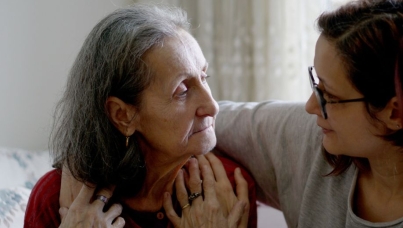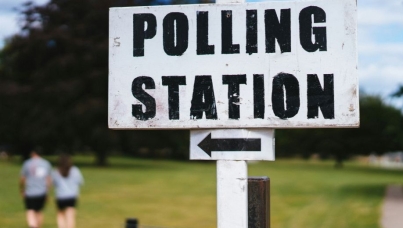Measuring fuel poverty in Scotland
Chris Martin looks at the recent developments relating to the Fuel Poverty measures
 Download the article as a PDF
There has been recent heated debate on moves in both Scotland and England to reassess how fuel poverty is measured and the resulting policy implications. The method for estimating fuel poverty - how many people cannot heat their homes to an acceptable level at a reasonable cost - has been consistent for over a decade. A household has been in fuel poverty if it needs to spend 10% or more of its post-tax income on gas and electricity. In Scotland, this has been derived from the Scottish House Condition Survey (SHCS).
Last year, the Hills Fuel Poverty Review suggested amending the definition of fuel poverty in England to include only those with low incomes and high heating costs (removing those with high incomes and high heating costs, and those with low incomes but low heating costs). The Scottish Government has also recently published a detailed discussion paper assessing the definition, measurement and analysis of fuel poverty.
The driver for these has come in part from the need to target resources at a time when there has been a sizeable increase in fuel poverty. While in Scotland the proportion of households in fuel poverty fell between 1996 and 2002 because of increased income and falling fuel prices, since then it has risen dramatically - from 13% of households in 2002 to 28% in 2010. Current trends suggest that by 2016, half of all household may be in fuel poverty. This was the date given in the Scottish Executive’s 2002 Fuel Poverty Statement to eradicate fuel poverty.
It is clear from the Scottish Government’s evidence review that the recent rises in fuel poverty have come about because of a substantial rise in fuel costs and static incomes despite considerable improvements in the energy efficiency of the housing stock. It notes that over the last 7 years, the proportion of dwellings with loft insulation has more than doubled, solid wall insulation has almost doubled and cavity wall insulation has increased from 33% to 62%. Indeed, it suggests that if everyone lived in dwellings with ‘exceptionally good’ energy efficiency, 14% would still be fuel poor.
Regardless of the issues of redefining fuel poverty, it is clear that more and more people are struggling to pay energy bills. In order to try and address this trend, the Scottish Government needs to consider its response in terms of the key factors that determine the level of fuel poverty, energy costs, energy efficiency of new homes and incomes.
The key driver of fuel poverty is the cost of gas and electricity and these costs look likely to increase given that natural energy stocks are continuing to diminish. While government’s ability to directly affect household energy bills is limited, it can support investment in micro-renewable sources of domestic energy, such as ground source heat pumps, solar photovoltaic systems, to make them more appealing and more necessary. Schemes such as the Renewable Heat Initiative, currently out for consultation by DECC, should help support domestic households in Scotland move away from fossil fuels and alleviate fuel poverty.
The Scottish Government should also continue to ensure that the energy efficiency of the housing stock is maximised in order to reduce household energy costs. This is most likely to happen by ensuring that new houses are built to the highest energy efficiency standards and that improvements to the existing stock are facilitated.
Download the article as a PDF
There has been recent heated debate on moves in both Scotland and England to reassess how fuel poverty is measured and the resulting policy implications. The method for estimating fuel poverty - how many people cannot heat their homes to an acceptable level at a reasonable cost - has been consistent for over a decade. A household has been in fuel poverty if it needs to spend 10% or more of its post-tax income on gas and electricity. In Scotland, this has been derived from the Scottish House Condition Survey (SHCS).
Last year, the Hills Fuel Poverty Review suggested amending the definition of fuel poverty in England to include only those with low incomes and high heating costs (removing those with high incomes and high heating costs, and those with low incomes but low heating costs). The Scottish Government has also recently published a detailed discussion paper assessing the definition, measurement and analysis of fuel poverty.
The driver for these has come in part from the need to target resources at a time when there has been a sizeable increase in fuel poverty. While in Scotland the proportion of households in fuel poverty fell between 1996 and 2002 because of increased income and falling fuel prices, since then it has risen dramatically - from 13% of households in 2002 to 28% in 2010. Current trends suggest that by 2016, half of all household may be in fuel poverty. This was the date given in the Scottish Executive’s 2002 Fuel Poverty Statement to eradicate fuel poverty.
It is clear from the Scottish Government’s evidence review that the recent rises in fuel poverty have come about because of a substantial rise in fuel costs and static incomes despite considerable improvements in the energy efficiency of the housing stock. It notes that over the last 7 years, the proportion of dwellings with loft insulation has more than doubled, solid wall insulation has almost doubled and cavity wall insulation has increased from 33% to 62%. Indeed, it suggests that if everyone lived in dwellings with ‘exceptionally good’ energy efficiency, 14% would still be fuel poor.
Regardless of the issues of redefining fuel poverty, it is clear that more and more people are struggling to pay energy bills. In order to try and address this trend, the Scottish Government needs to consider its response in terms of the key factors that determine the level of fuel poverty, energy costs, energy efficiency of new homes and incomes.
The key driver of fuel poverty is the cost of gas and electricity and these costs look likely to increase given that natural energy stocks are continuing to diminish. While government’s ability to directly affect household energy bills is limited, it can support investment in micro-renewable sources of domestic energy, such as ground source heat pumps, solar photovoltaic systems, to make them more appealing and more necessary. Schemes such as the Renewable Heat Initiative, currently out for consultation by DECC, should help support domestic households in Scotland move away from fossil fuels and alleviate fuel poverty.
The Scottish Government should also continue to ensure that the energy efficiency of the housing stock is maximised in order to reduce household energy costs. This is most likely to happen by ensuring that new houses are built to the highest energy efficiency standards and that improvements to the existing stock are facilitated.
The rate of fuel poverty will also be influenced by levels of income, raising questions for governments about what assistance to give with fuel bills and who should receive it. This feeds into an ongoing debate about the means-testing of benefits such as the Winter Fuel Allowance. However, even if a government proposed the full means-testing of winter fuel payments, the Scottish Government’s evidence review highlights that those in fuel poverty do not necessarily overlap with those in receipt of benefit so such targeting of resources may be difficult.
Check out Our Latest Thinking on current Scottish political and social issues here



